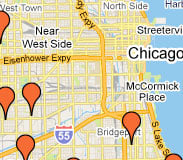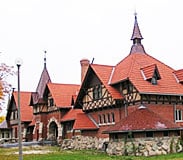Until the 1950s, the industrial neighborhood known as Back of the Yards was the largest livestock yards and meatpacking center in the country. Immigrants came first from Germany and Ireland, then from Eastern Europe, and finally from Mexico and the American South to slaughter, butcher, and package as many as 18 million animals a year. The working and living conditions for most of these laborers were deplorable. Back of the Yards was the setting for Upton Sinclairs groundbreaking novel, The Jungle. Sinclair wrote, This is no fairy story and no joke; the meat will be shoveled into carts and the man who did the shoveling will not trouble to lift out a rat even when he saw one.
The neighborhood has a long history of community organizing and social reformation. Major meatpacking strikes occurred in 1904 and 1922. Mary McDowell fought to provide workers with health education services, vocational training, sanitary living conditions, and basic sewage services. Saul Alinsky and local park superintendent Joseph Meegan collaborated to found the Back of the Yards Neighborhood Council, which still remains an important force in the neighborhood.
Today, a newer industrial park on the former site of the Union Stockyards provides space for approximately 70 companies and employs thousands of local residents, including a sizable Mexican-American population.

Back of the Yards Neighborhood







